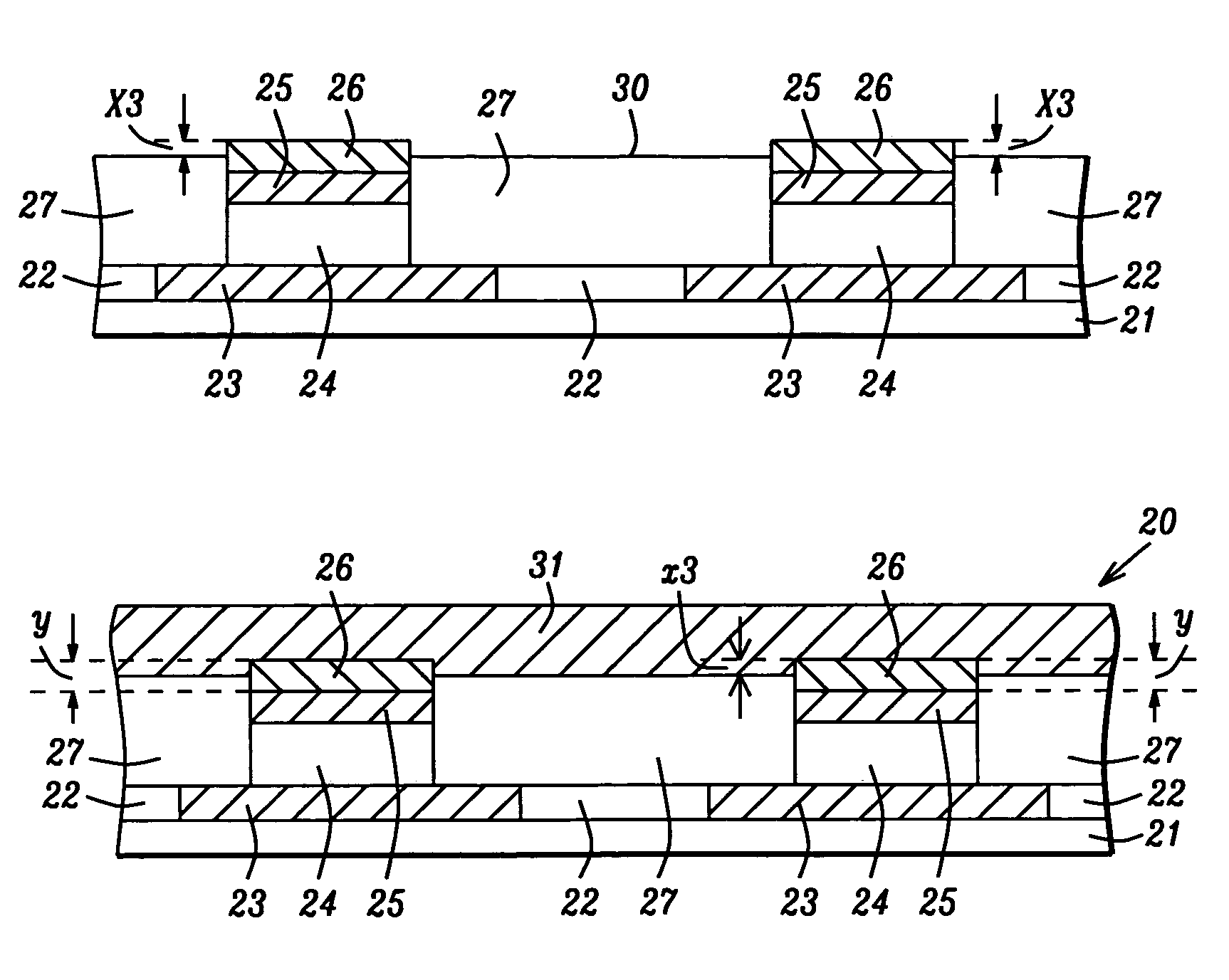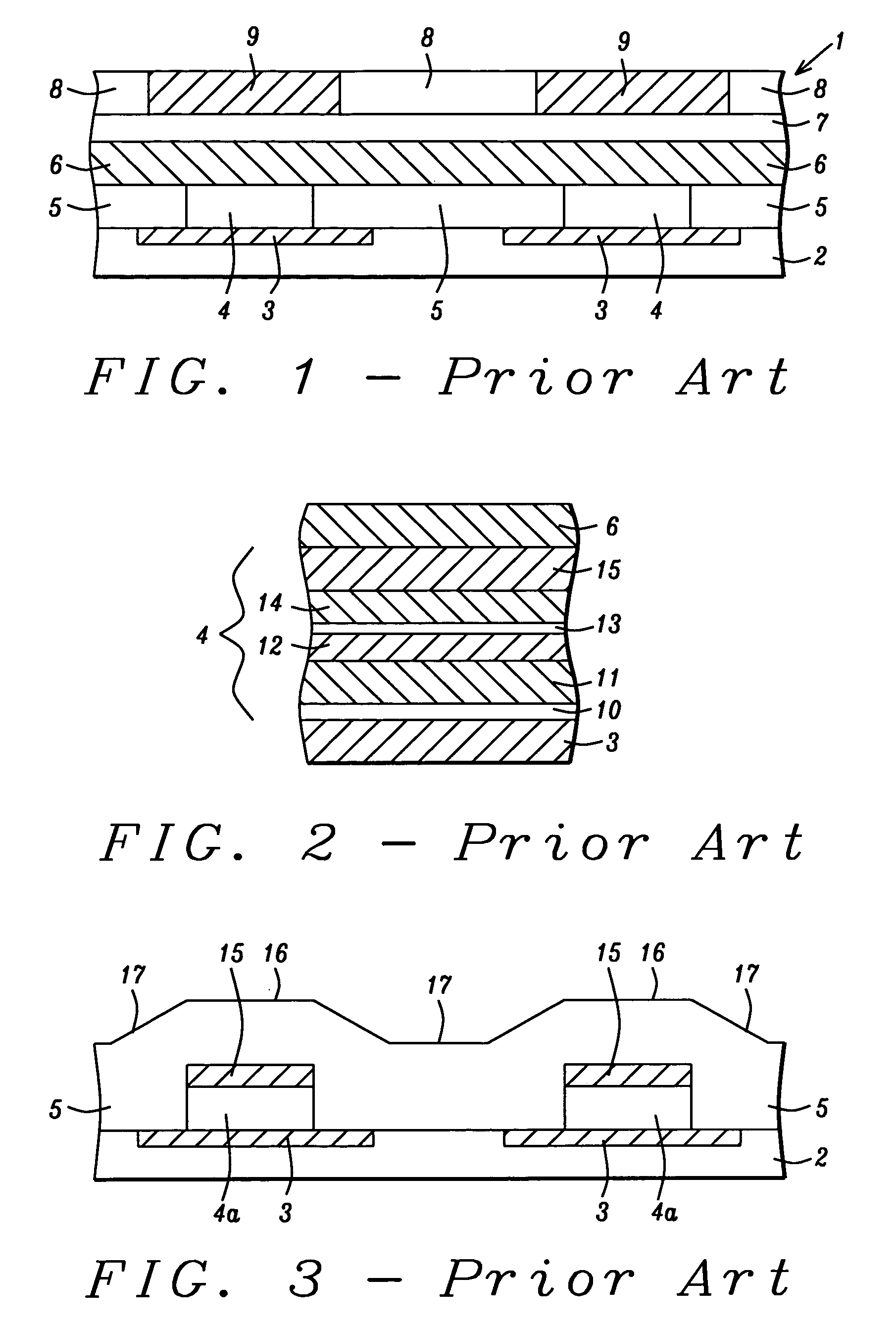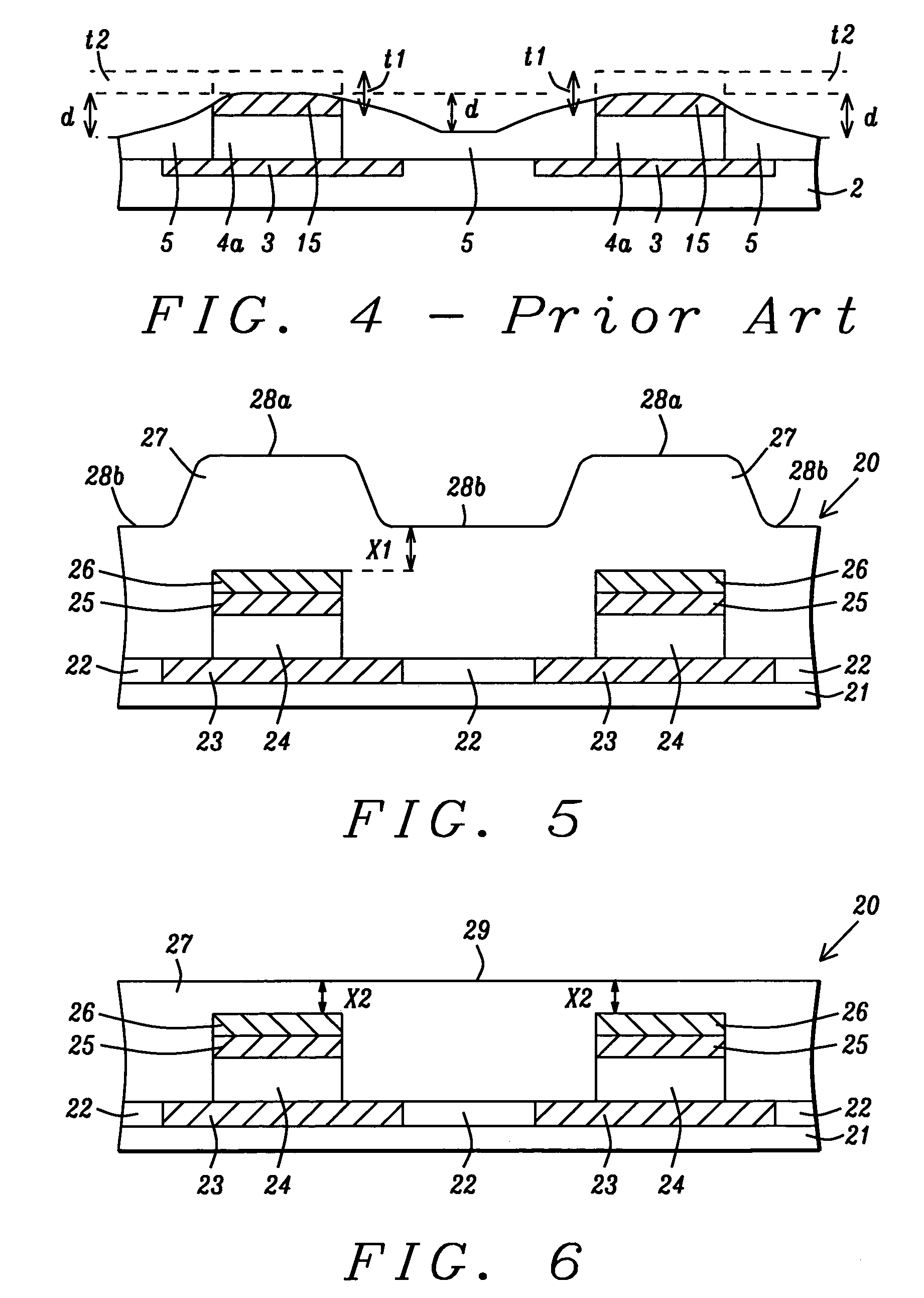MRAM cell structure and method of fabrication
a technology of mram cell and cell structure, applied in the direction of digital storage, instruments, semiconductor devices, etc., can solve the problems of poor device performance and device performance degradation
- Summary
- Abstract
- Description
- Claims
- Application Information
AI Technical Summary
Benefits of technology
Problems solved by technology
Method used
Image
Examples
Embodiment Construction
[0031]The present invention is an MRAM cell structure on an MRAM chip in which the distance from a bit line or word line to an underlying free layer in a magnetic tunnel junction (MTJ) is well controlled and an adjacent insulation layer is essentially flat and coplanar with the MTJ. The drawings are provided by way of example and are not intended to limit the scope of the invention. Although only two MRAM cells and two MTJs are depicted in the cross-sectional drawings, it is understood that from a top-down view there are a plurality of MRAM cells in an array that includes multiple rows and multiple columns on the MRAM chip. MRAM cell structure is intended to mean a portion of the MRAM chip including the MTJ as well as nearby insulation layers and conductive layers.
[0032]A method of forming the MRAM cell structure of the present invention will be described first. Referring to FIG. 5, a partially completed MRAM cell structure 20 is shown that includes a substrate 21 which may be silic...
PUM
 Login to View More
Login to View More Abstract
Description
Claims
Application Information
 Login to View More
Login to View More - R&D
- Intellectual Property
- Life Sciences
- Materials
- Tech Scout
- Unparalleled Data Quality
- Higher Quality Content
- 60% Fewer Hallucinations
Browse by: Latest US Patents, China's latest patents, Technical Efficacy Thesaurus, Application Domain, Technology Topic, Popular Technical Reports.
© 2025 PatSnap. All rights reserved.Legal|Privacy policy|Modern Slavery Act Transparency Statement|Sitemap|About US| Contact US: help@patsnap.com



